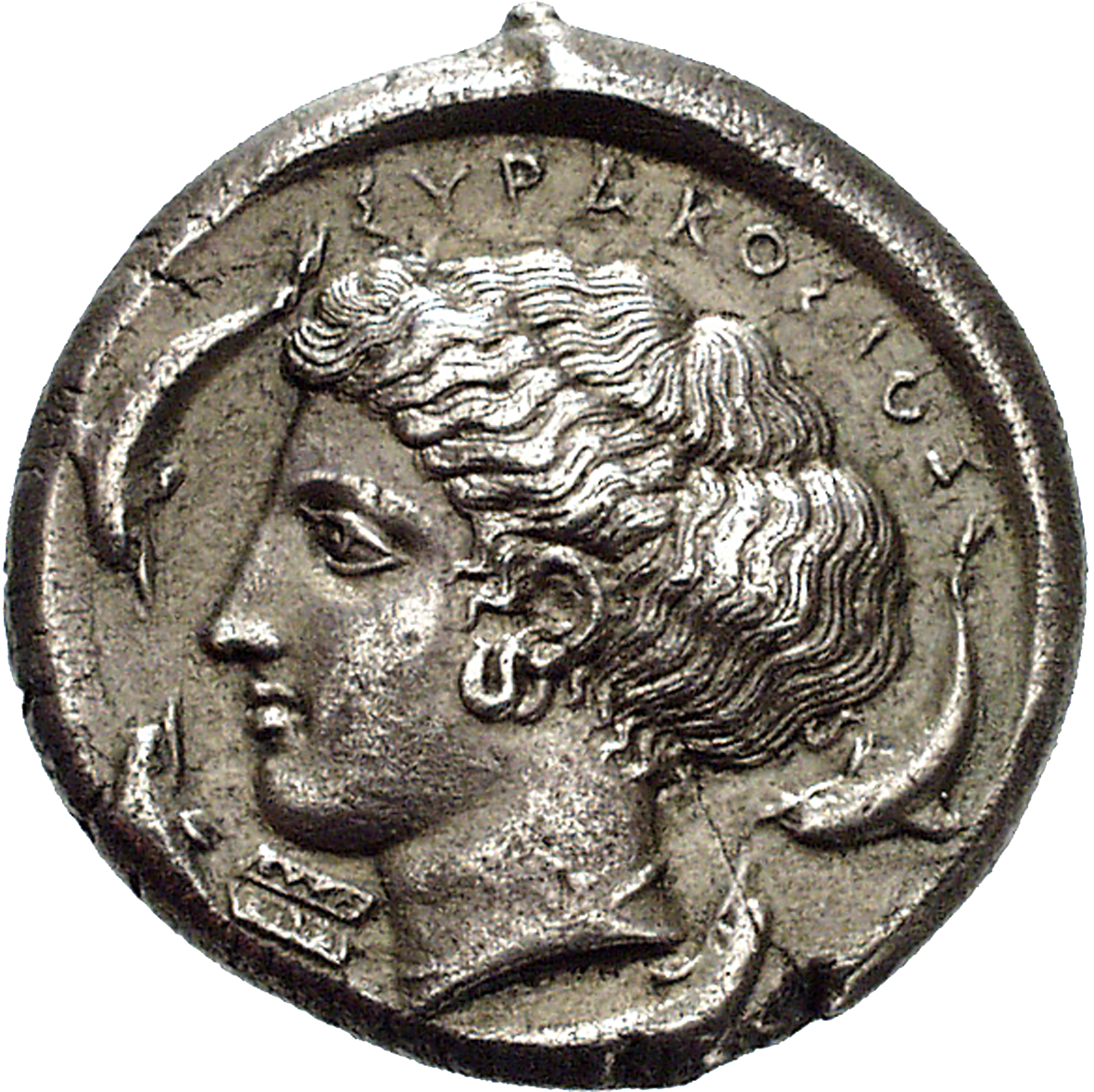Um 450 v. Chr. begannen die besten Stempelschneider Siziliens ihre Werke zu signieren. Diese Tetradrachme trägt gleich zwei Unterschriften: auf der Vorderseite die Buchstaben EU, die vermutlich für den Künstler Euainetos stehen. Auf der Rückseite, unter dem Kinn der Arethusa, ist der Name Eukleidas zu lesen.
Die beiden Künstler Eukleidas und Euainetos traten seit etwa 415 v. Chr. in der Münze von Syrakus hervor. Zusammen begannen sie, das Erscheinungsbild auf den syrakusanischen Münzen grundlegend umzugestalten. Euainetos war es zu verdanken, dass die Quadriga, der Rennwagen auf der Vorderseite, eine zunehmend realistischere Perspektive erhielt. Eukleidas schuf den eleganten Kopf der Nymphe Arethusa auf der Rückseite mit den vier rundum schwimmenden Delfinen.

